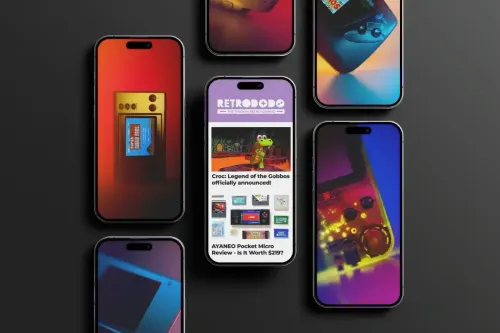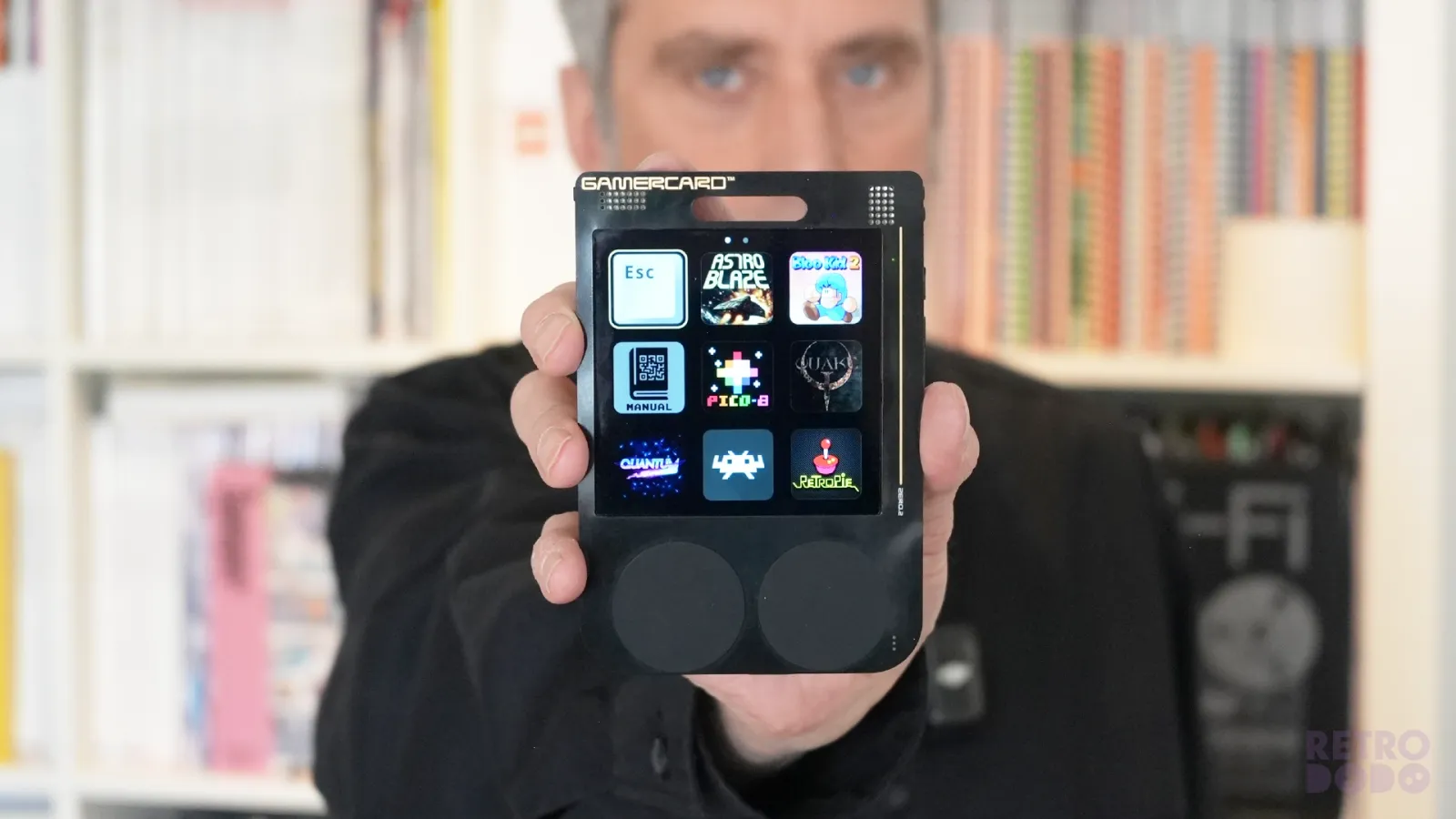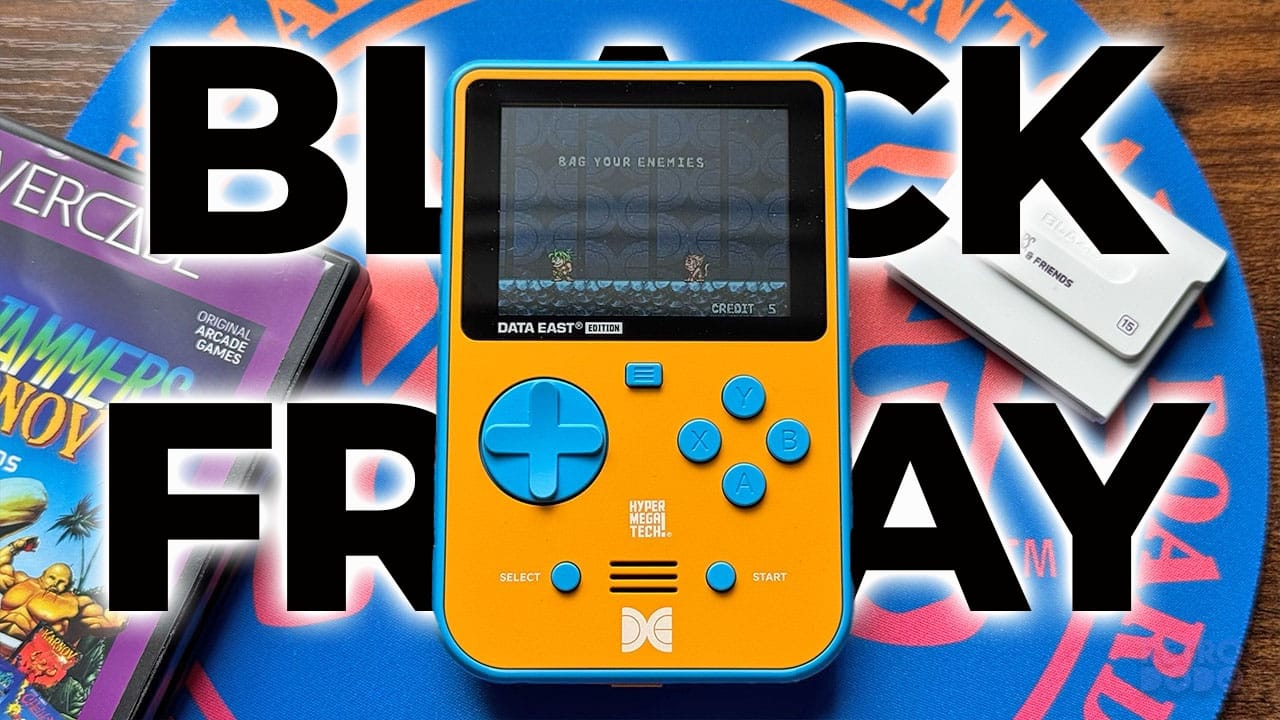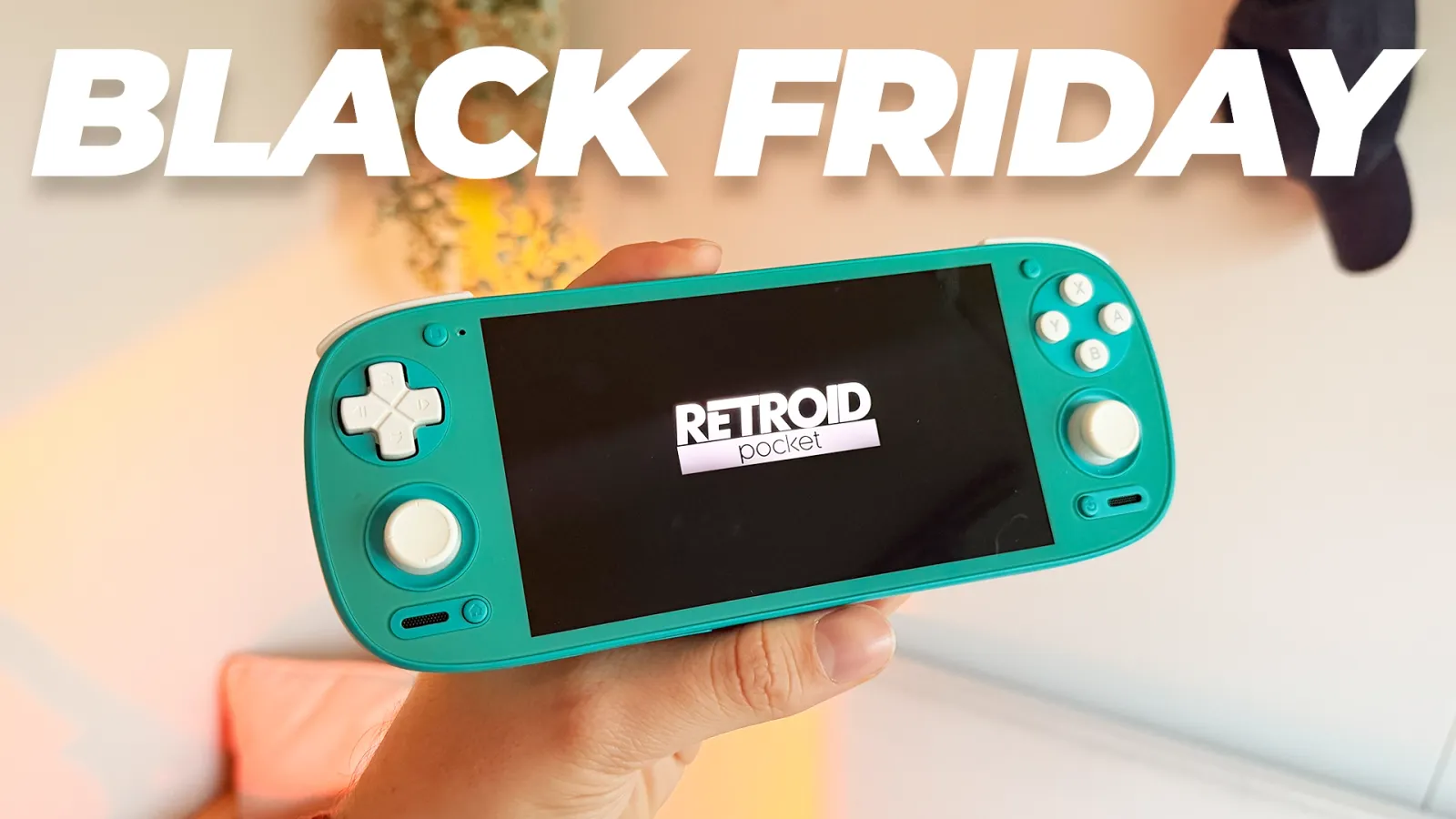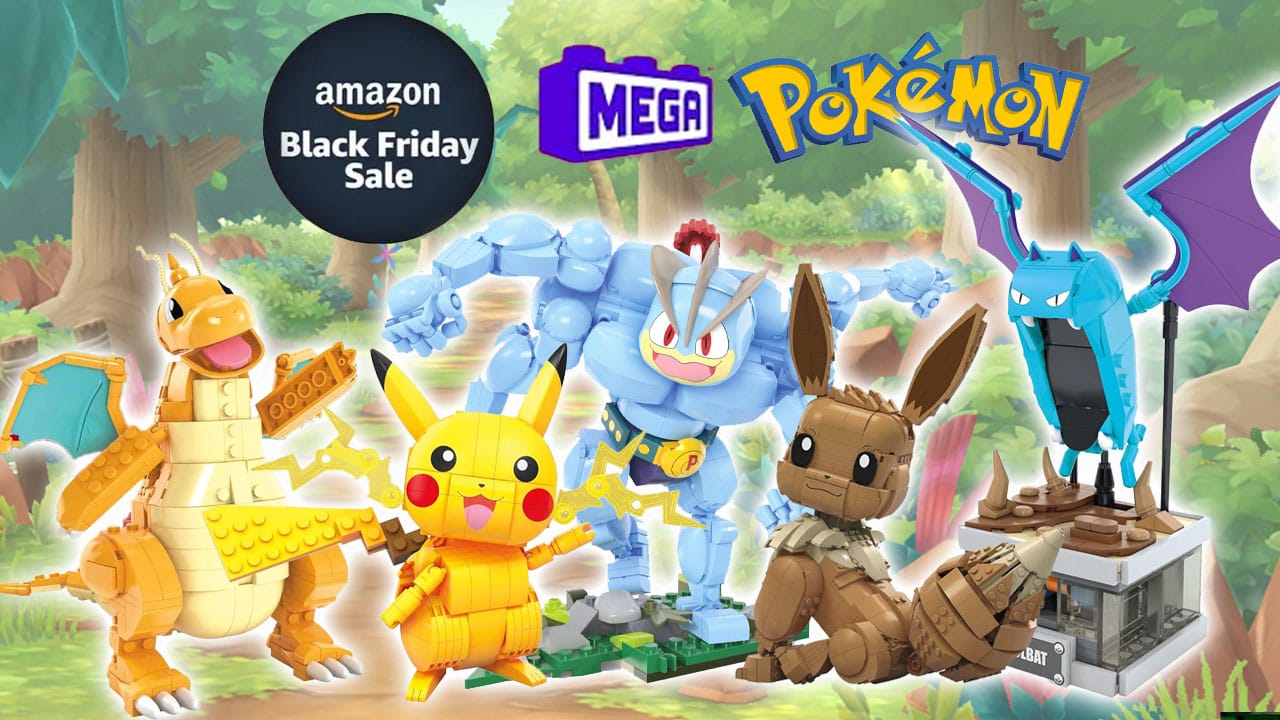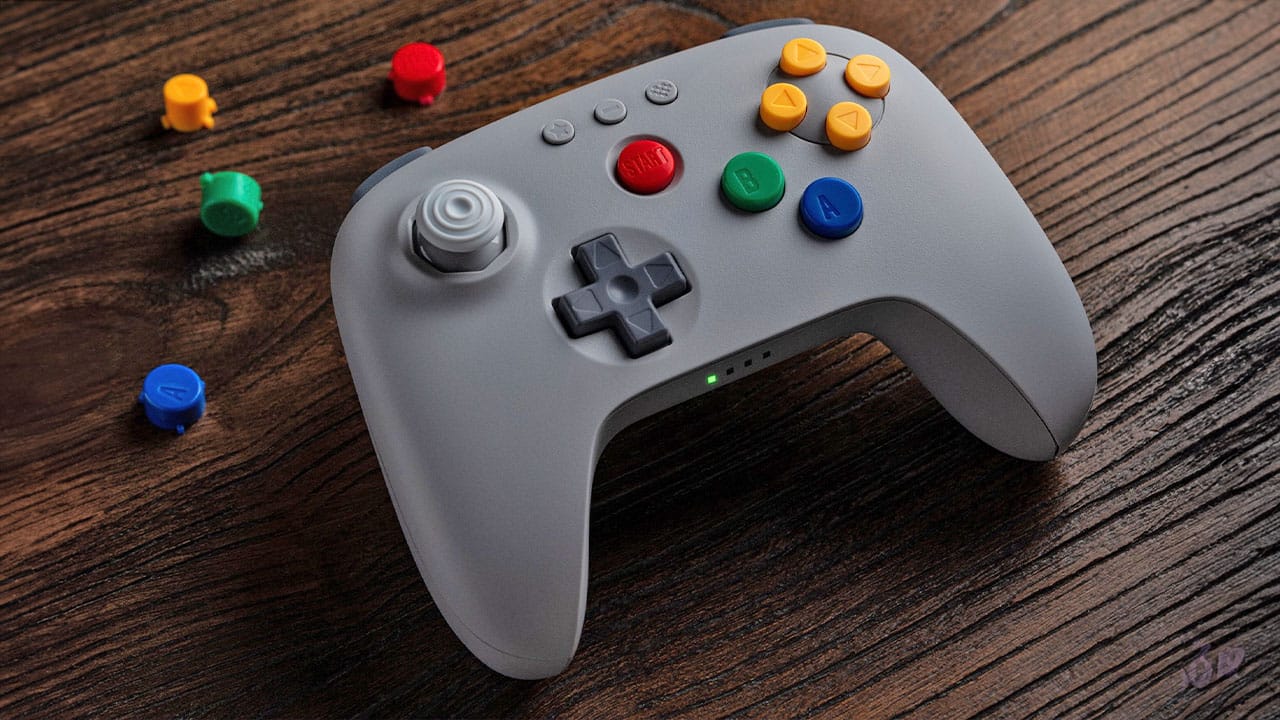I had the great privilege of meeting Grant Sinclair (ZX Spectrum creator Clive Sinclair's nephew) to get a first look at his upcoming invention, known as the GAMERCARD.
We're one of the first publications in the world to preview this intriguing handheld device, which is awesome, as we're small and independent, often getting beaten up by the larger gaming sites, so I appreciate Grant inviting us over to Wales to get some hands-on time with it.
Put simply, the GAMERCARD is one of the world's thinnest handheld game consoles, with a Raspberry Pi stuffed inside of it, partnered with a 1:1 4" 720p IPS display and a 1600MAH battery capacity.
This is one of the most absurd handhelds I have had my hands on.
As Grant handed over the device, I had to really focus on what I was holding. The thinness quickly confused me. A games console, and technically a PC for that matter, should not be this thin.
But it is, and... it's fascinating.
Let's Talk About The Design
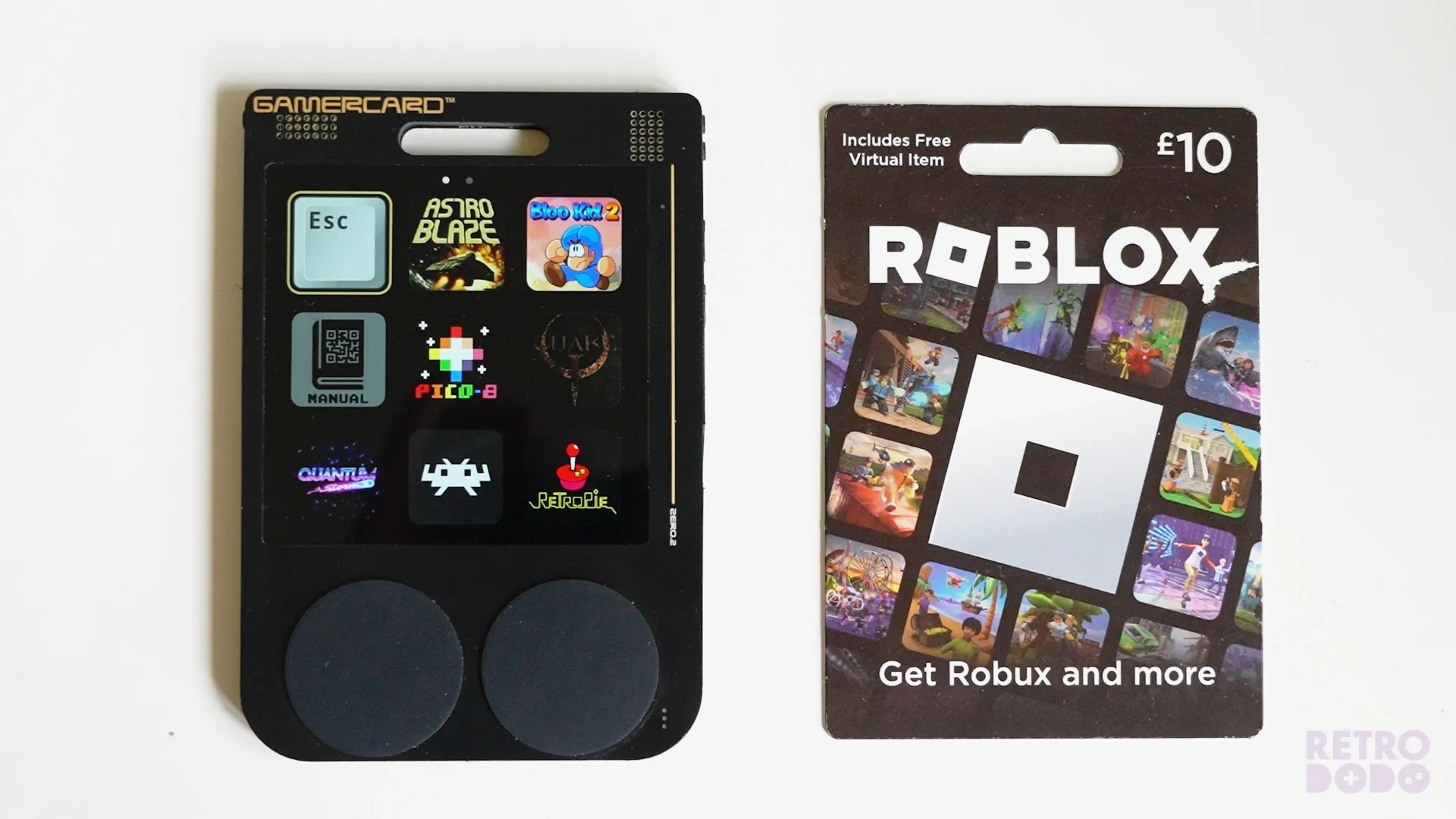
At just 6mm in thickness, it's the same size as a typical gift card that you find hanging up on a wall in your local supermarket. And that's exactly what inspired Grant to build this the way it is, following in his uncle's footsteps by making obscenely thin tech products.
Grant showed me around some of Clive's inventions of the past, such as the Sinclair Executive, the world's thinnest calculator when it was released in 1972, and the long list of thin flashlights, all of which inspired Grant to create this handheld. And obviously the ZX Spectrum, which Clive is renowned for in the gaming industry.
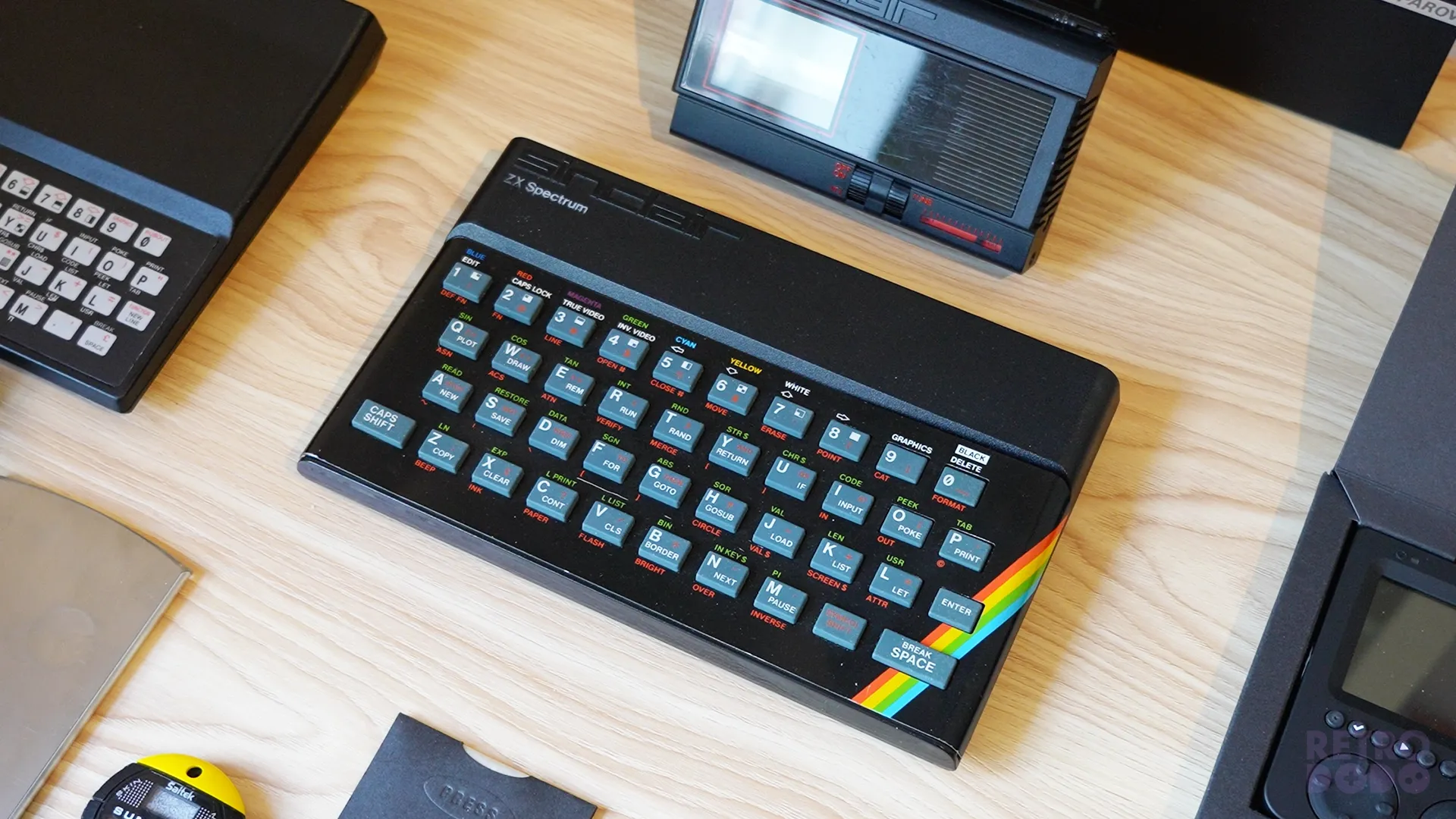
Grant wants the GAMERCARD to be displayed for sale like a typical gift card, going so far as adding a hang tab, or a hole that can hook this handheld onto a display rail, allowing customers to literally "grab and go".
As much as I understand the advertising potential for it being displayed this way, I did question how this would work if the handhelds are out of battery. Should they be displayed for weeks or even months without being sold? The same goes for the theft potential for something like this.
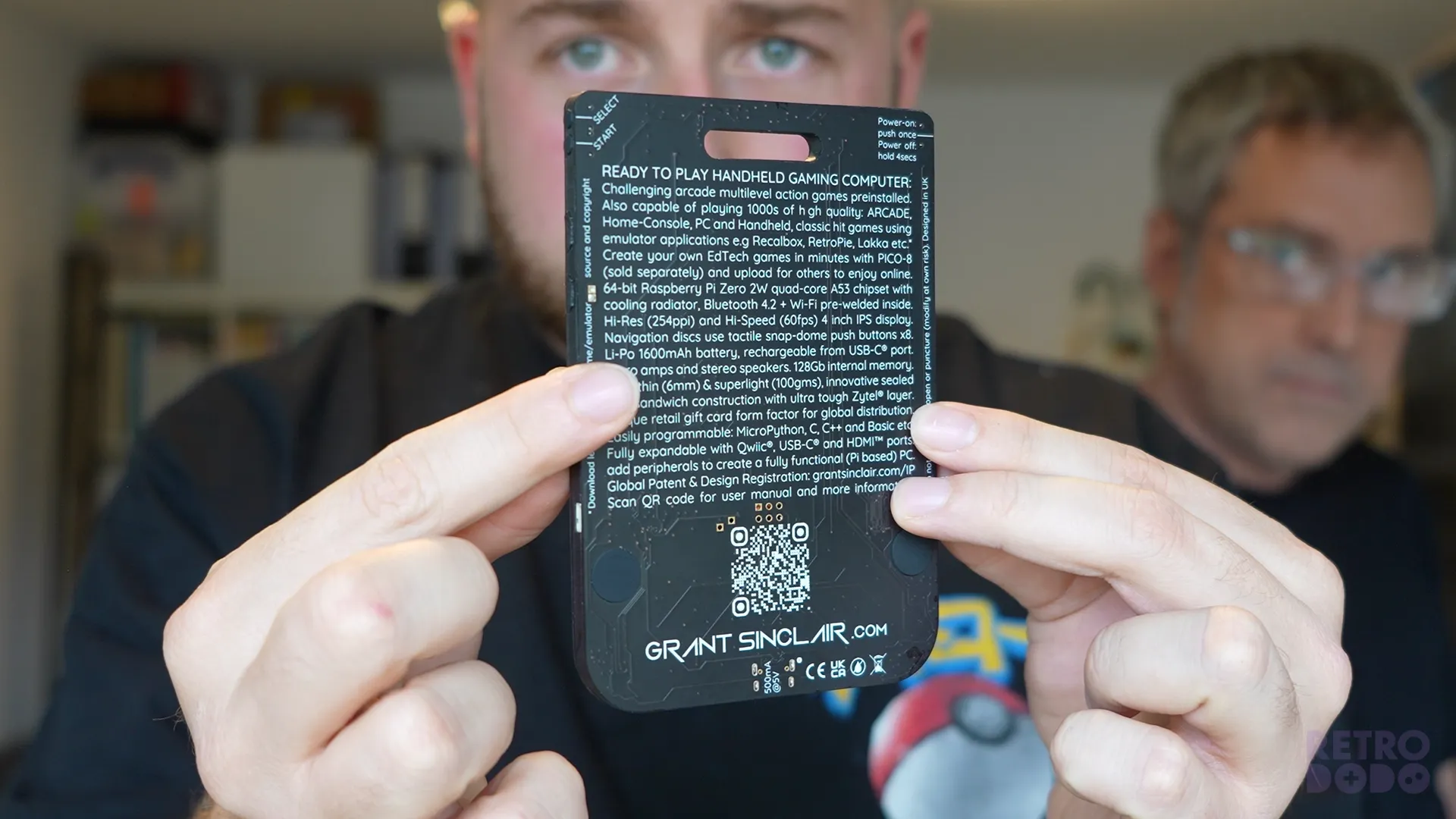
That said, this design feature makes the handheld look incredibly unique, opening up possibilities for customers to hang this themselves or add accessories. And it's why you see text on the back, alongside a QR code, as there will be literally zero packaging for this when it's on the "shelves", so to speak.
The front features a matte black faceplate (the prototype units in this article have a high gloss faceplate) and a square 4" IPS display that looks incredibly crisp, coming in at 256 PPI. That's a higher pixel density than a MacBook Retina Display.
It's also made with sapphire glass, which is almost as hard as diamond and incredibly scratch-resistant.
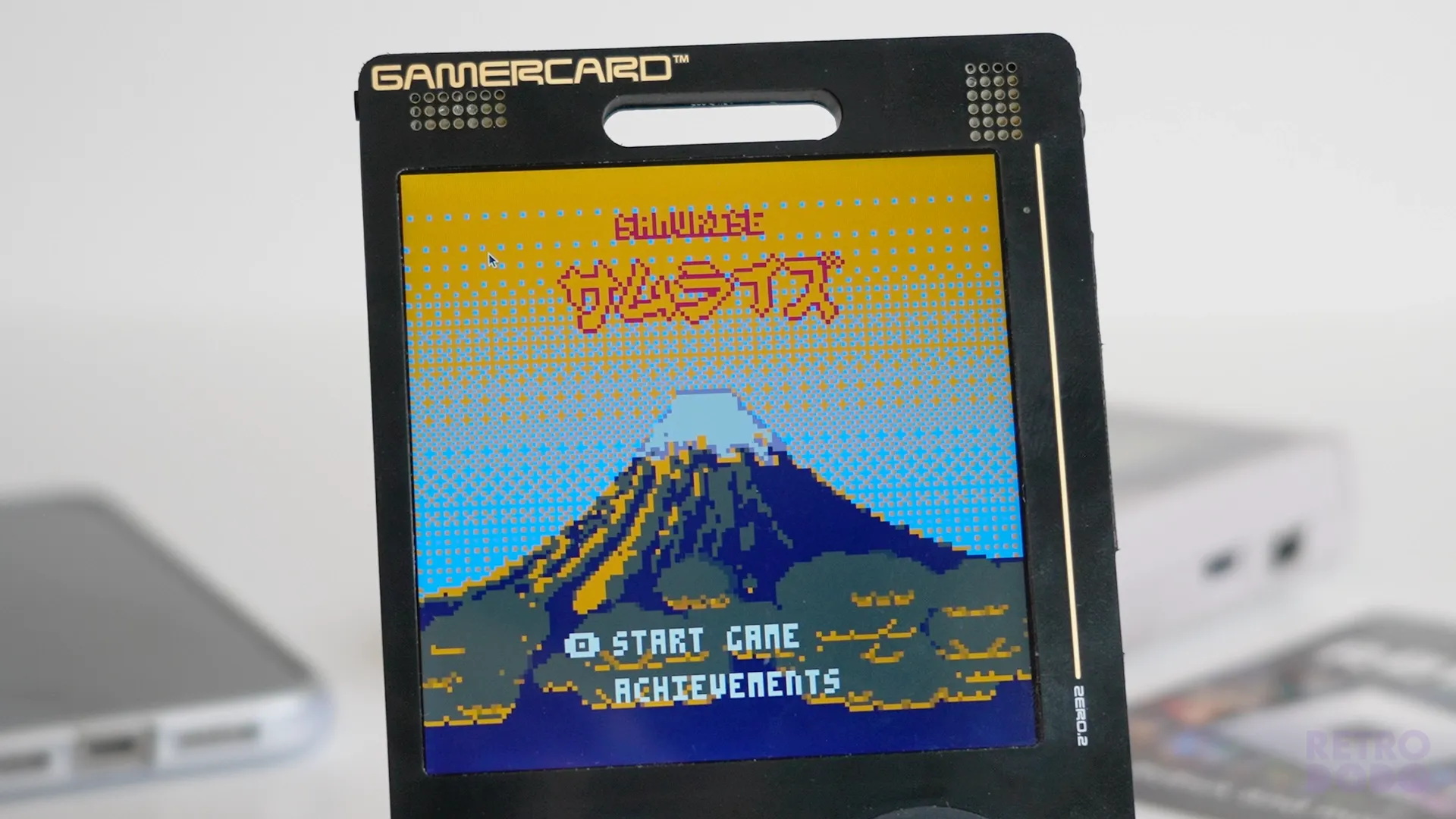
Up top, you'll find two very loud stereo speakers, each featuring an amplifier to increase clarity. Then, a subtle gold line down the side adds the retro-futuristic vibes that Grant enjoys artistically.
Below the display, you'll find two silicone circles, one hiding a D-PAD underneath, or rather four directional buttons that require a strong press. On the other side, again, four buttons, but these are the action buttons.
The silicone pads were added on purpose to create a unique, futuristic look and to create a new way of gaming. The buttons underneath will need to be pressed individually, instead of sliding your finger around like a typical trackpad that you'll find on the Steam Deck.
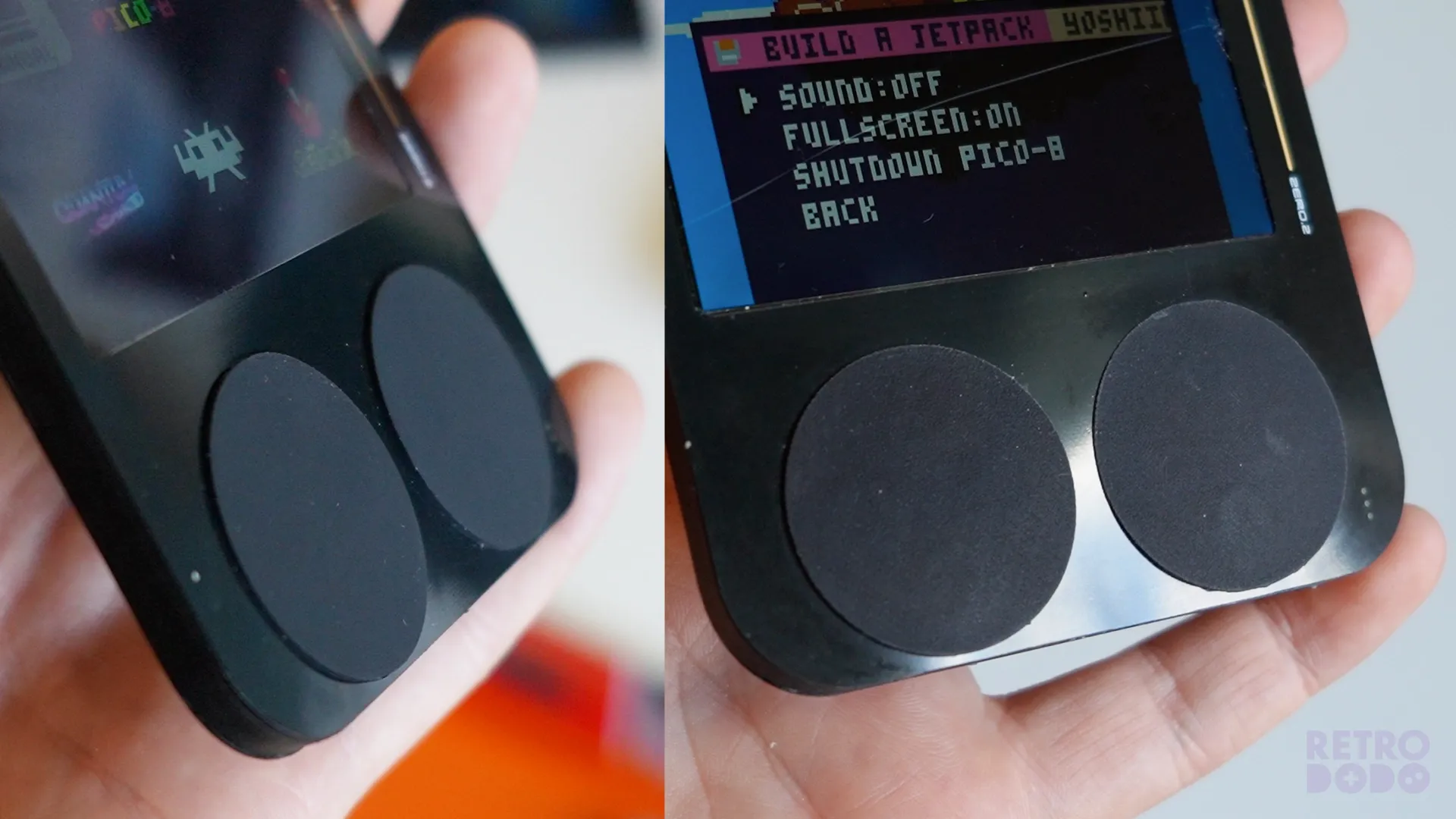
This certainly takes some getting used to and feels nostalgic in the sense that the actual buttons underneath are loud, clunky and release noticeable feedback. It's undeniably beautiful visually and almost hides that it's a game console, which I like. However, I do wonder how long these will last.
Even on the prototype units, I noticed the indentation of the buttons underneath the silicone, and because some of the games on here require fast movement, the silicone itself is certainly going to take some rough beating over weeks, months if not years.
Can the silicone handle that much wear and tear? Will customers eventually require replacement pads? Are replacement pads even available to buy? Only time will tell, but I am hoping Grant has considered this and that the silicone will last for years to come.
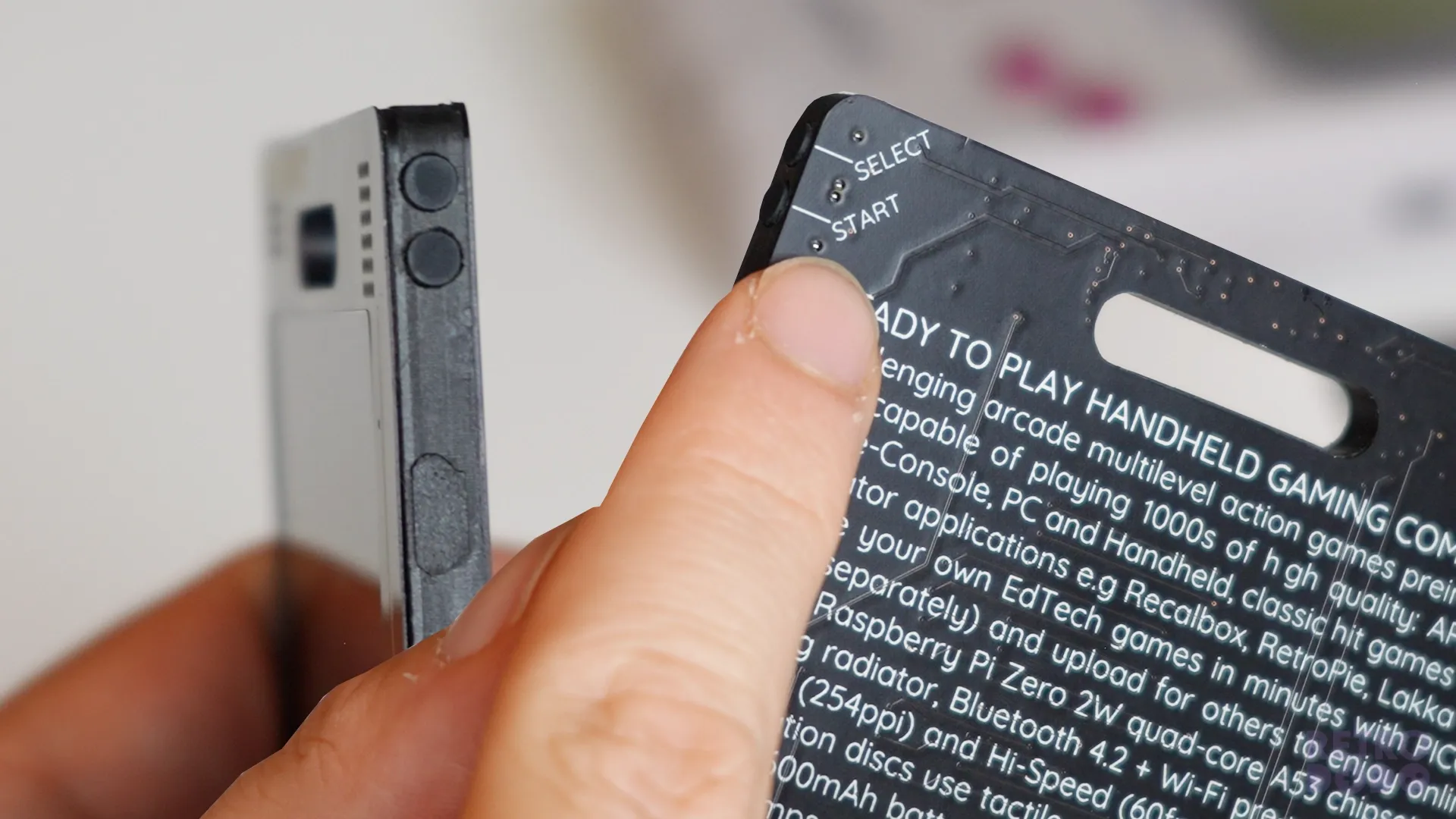
The start and select buttons are found on the side of the device, with small text indicating that on the back. These are very small buttons and will require you to focus on them when pressed, but they do the job and keep the face looking incredibly minimal.
On the back, you'll also find text showing the on/off button. Very well hidden on the back are two shoulder buttons, which I actually missed. It wasn't until I asked Grant if these silicone circles were hiding screw holes that he then informed me these were actually trigger buttons.
These are small silicone pads, just like the front, each hiding a button underneath that acts as a trigger button. I did advise that Grant should add some kind of text, or embossed L/R letters, to make them more obvious to the eye that they are buttons.
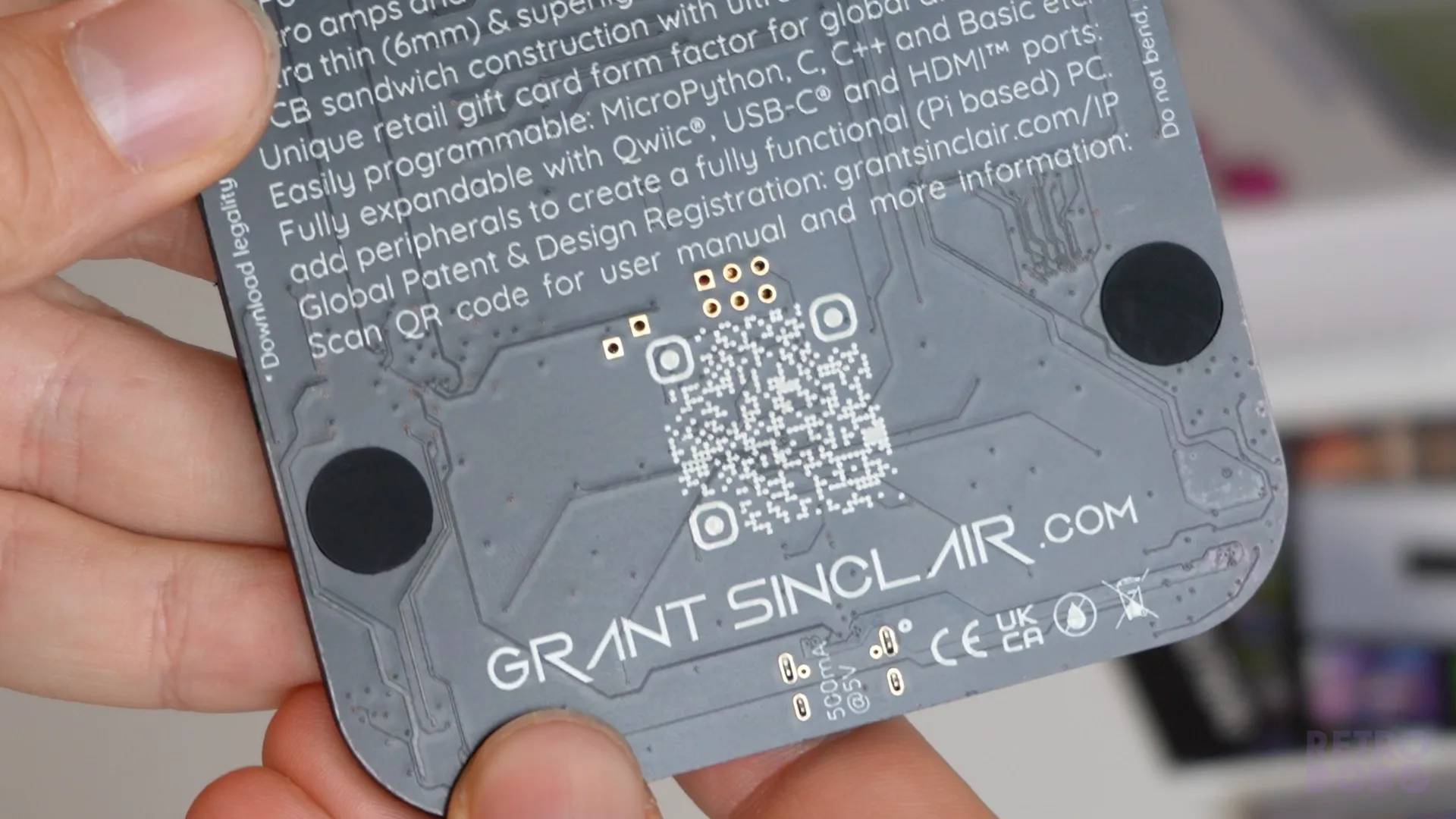
It comes with a USB-C port for charging and two Micro USB ports for you to also mess around with should you want to tinker with the internals.
In the hand, it's a good-sized device, and the 4" display is warmly welcomed. The thinness is what makes this device so magical, and Grant did a lot of work making it this thin; even with a Raspberry Pi, a battery and a beautiful display inside, it's truly impressive.
I believe this is the world's thinnest games console. The thinnest I can compare it with is the Thumby, which is 7mm thin, whereas the GAMERCARD is 6mm thin!
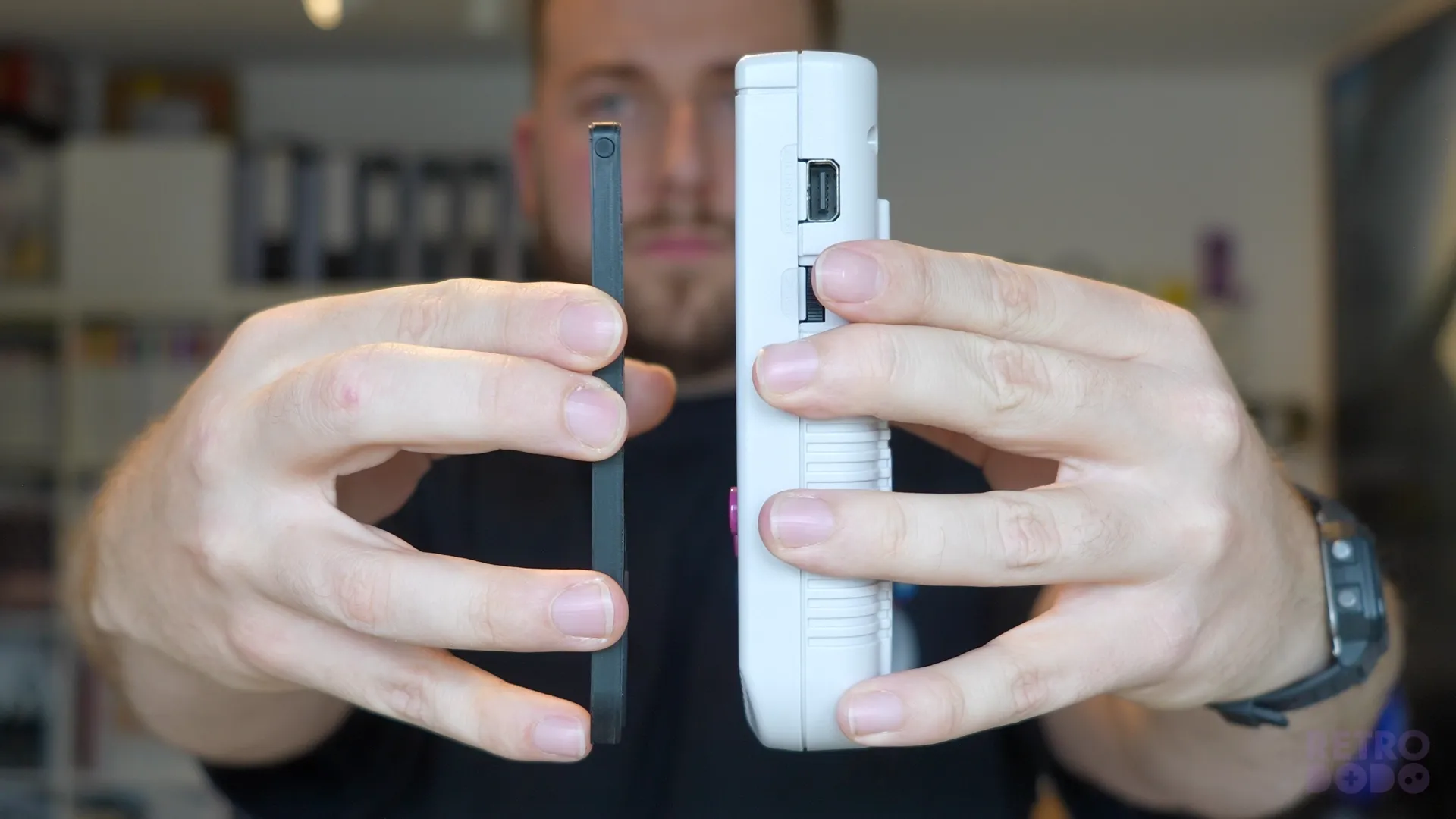
Just take a look at it in comparison to the Original GAME BOY DMG. It's ridiculously thin, but it feels strong enough that it can be placed in a bag or in your pocket without it snapping in half.
What Can It Play?
As mentioned, this is running on a Raspberry Pi Zero, which means it's basically a miniature computer, designed to have a custom front-end made by Grant's team that makes exploring games far more easily than reading code or building something yourself.
It comes pre-loaded with 5 different games, two being licensed Nintendo Switch ports of the games Astro Blaze and Bloo Kid 2. Not only that, you'll find Saboteur 1, 2 and 3 on here, stealth, and action-adventure games originally made for the ZX Spectrum.
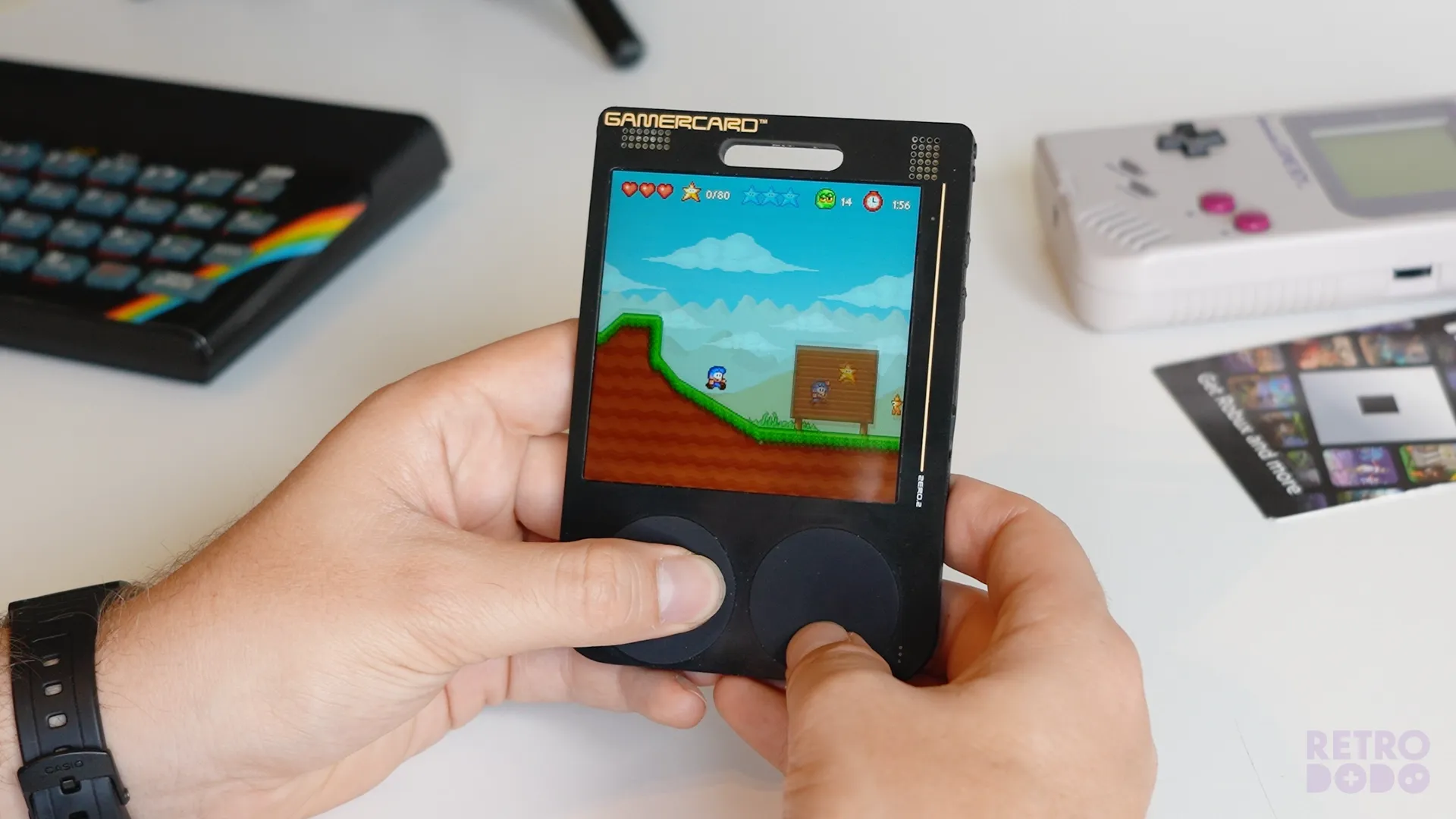
Bloo Kids 2 and Astro Blaze work well on here, and fit the 720p display very well. This display really packs a punch; it shows a beautiful range of colours, can be seen outside, and is ridiculously crisp, adding to the modern feel of the device.
Emulation works on here, but Grant wasn't comfortable with me showcasing this on camera due to being concerned with Nintendo knocking on his door, which is fair enough.
Emulators will not be pre-installed on here, however customers are able to install RetroPie on here themselves, and after testing it, it does indeed emulate games.
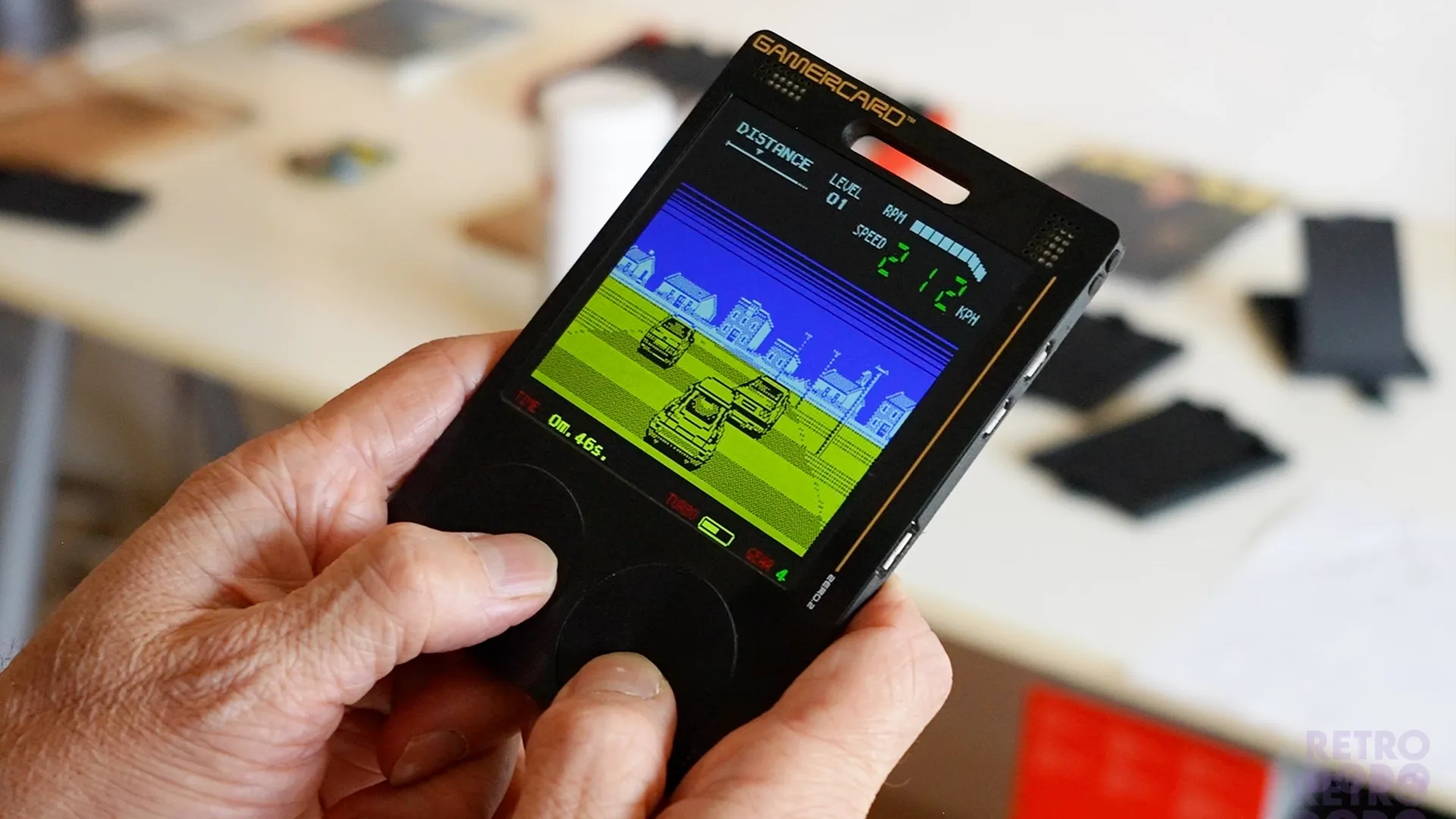
RetroPie is a very reliable piece of emulation software. Due to the screen ratio, you will need to tweak some settings, and I am confident you can emulate retro games up to and including PlayStation 1 on here.
I only spent time emulating SNES games, but I can imagine GAME BOY, Neo Geo and SEGA Game Gear games will look beautiful on here.
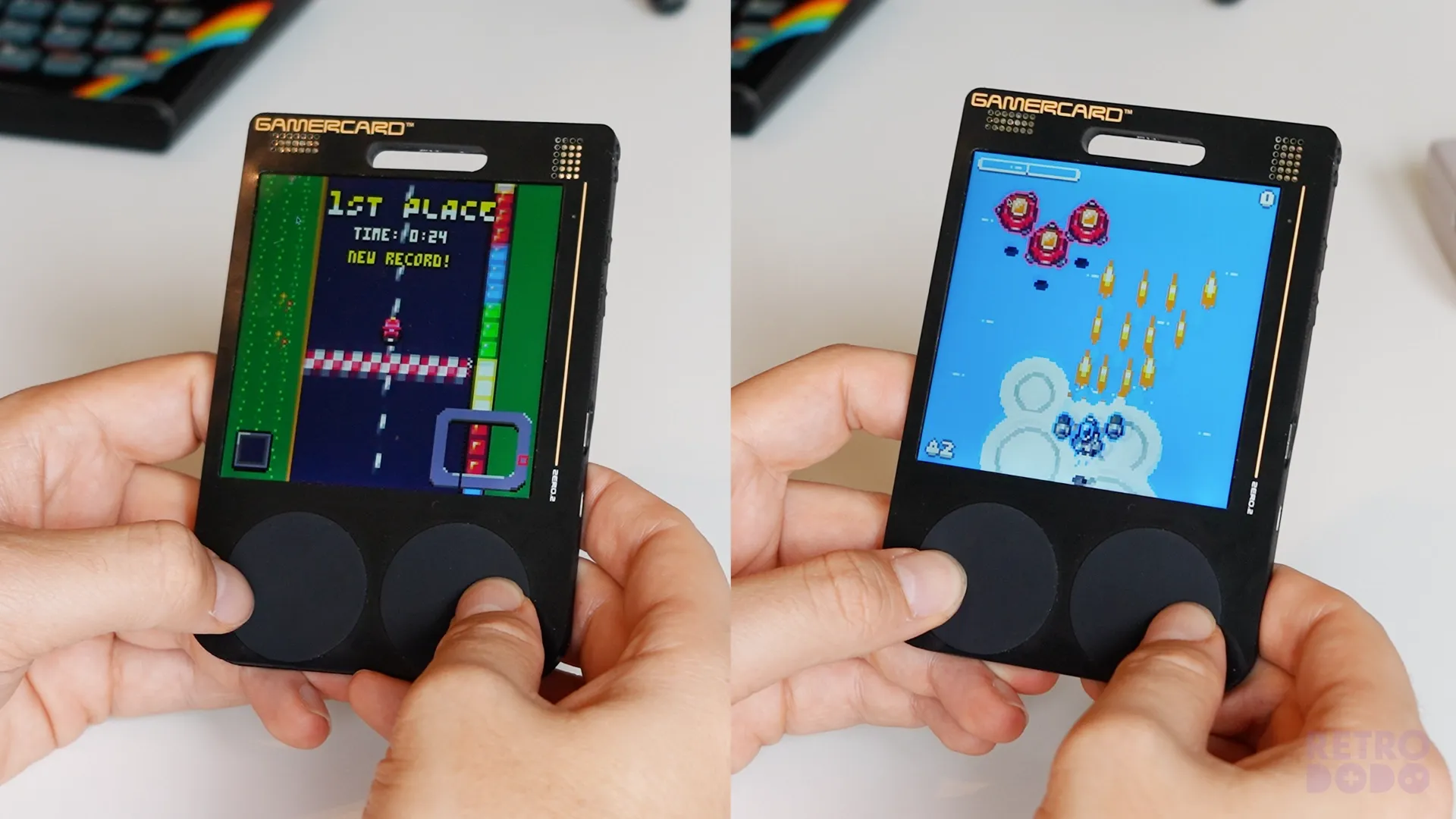
PICO-8 gamers will have an absolute blast on here, and it is one of the areas that Grant wants to see more game development for. PICO-8 will play a large part in attracting gamers to this device, and the gameplay fits this beautiful display natively.
I spent most of my time testing PICO-8 games and was having an absolute blast exploring the never-ending library of games compatible with this device.
It's clear that those interested in game development will enjoy this handheld, and Grant hopes children and schools can get hands on with the GAMERCARD, too. You can also run games natively on here because it's technically a PC.
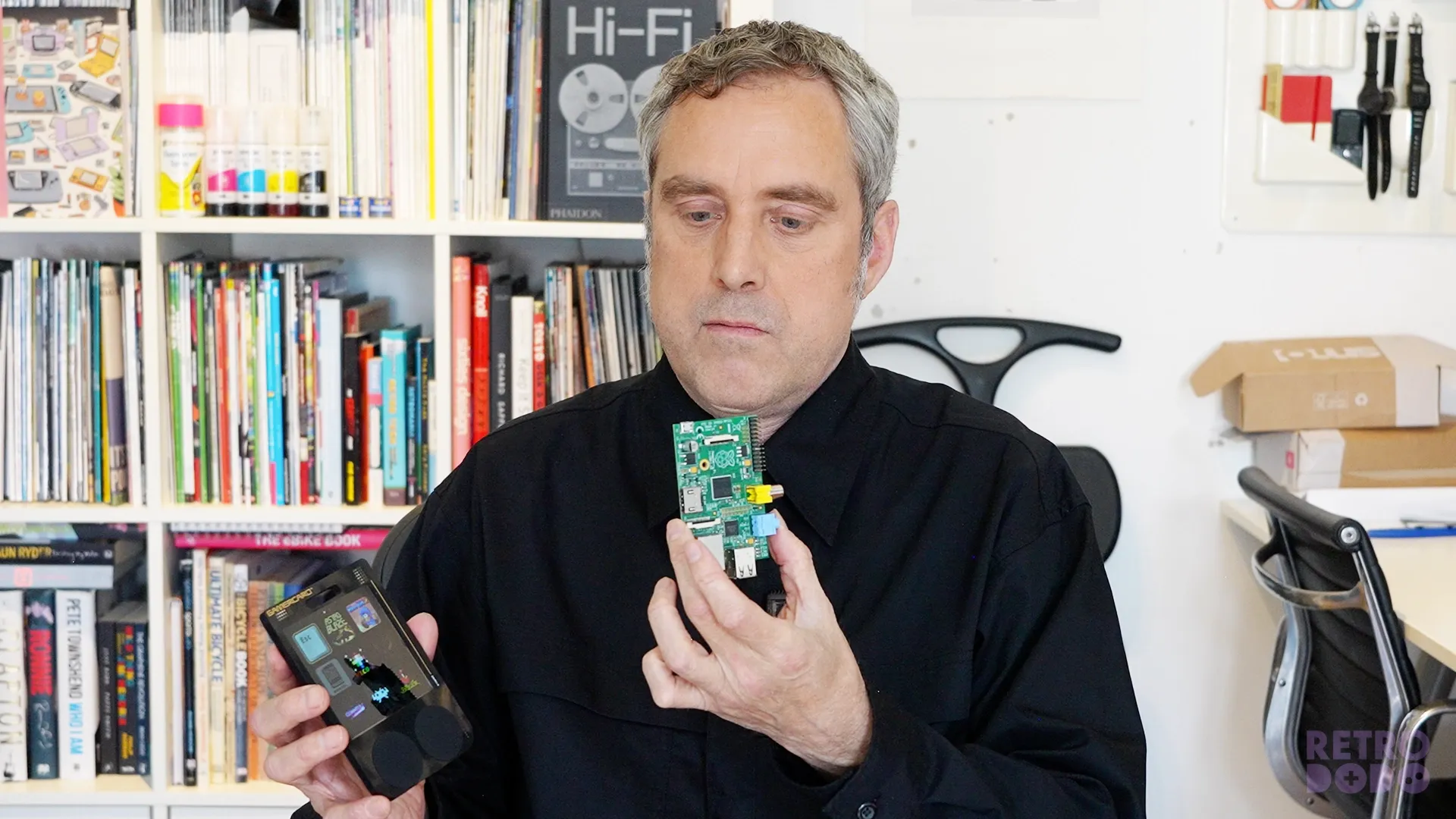
I did notice that the device warms up fairly quickly, not to a point where it's hot, but you'll notice it. Inside is a heatsink, which will stop it from getting too warm.
As mentioned, I had limited time with this, so I couldn't push it to its limits in terms of emulation, so I am not sure how hot this thing gets or what its actual gaming limits are as of now.
The User Experience
For me, how a gaming console looks and feels from a user experience is incredibly important, so much so that I think it's almost one of the most important parts of creating a pleasurable gaming product in 2025.
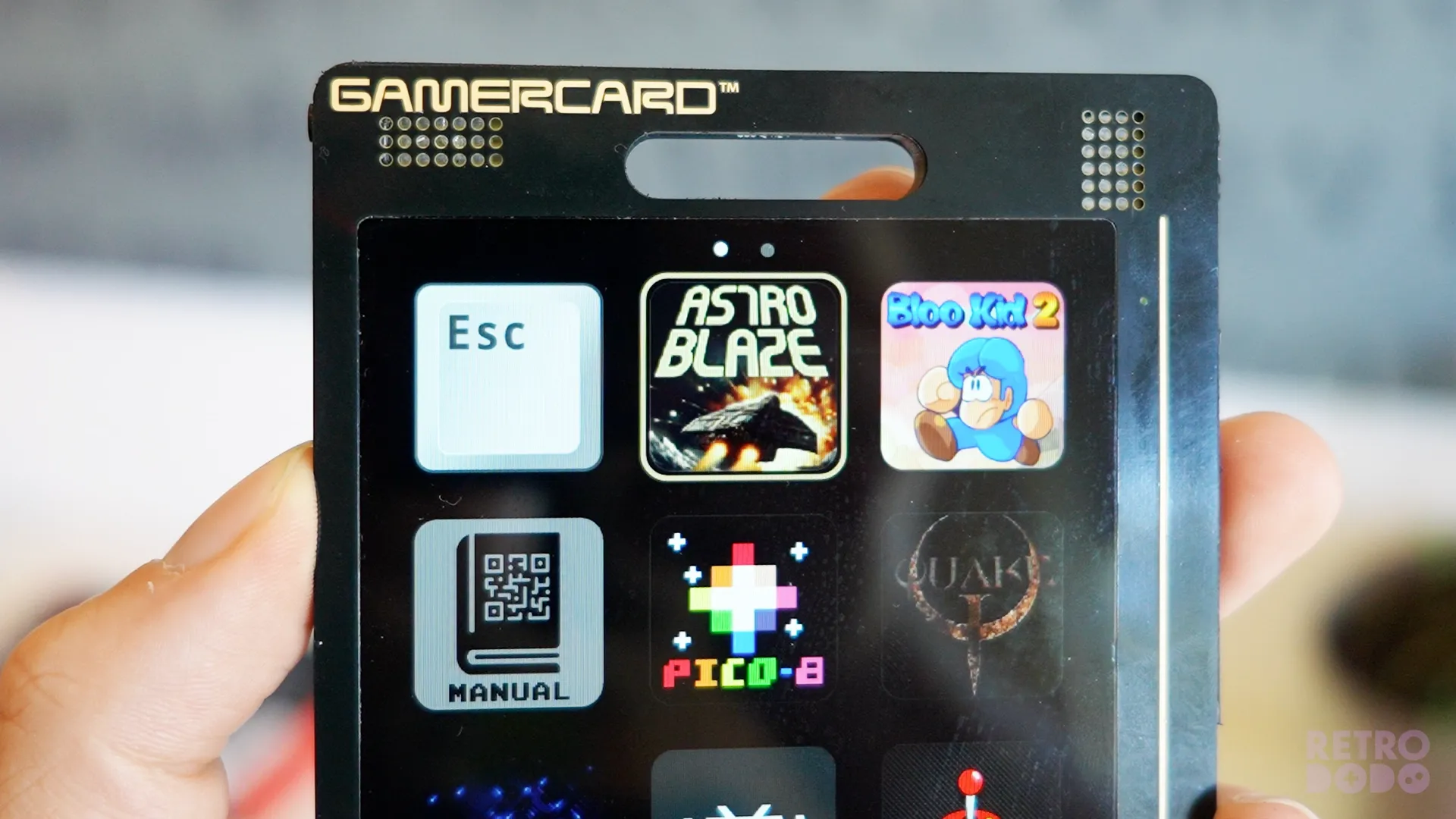
I've reviewed many handhelds where the physical side is great, but the software side turns it into a device that goes straight into the drawer to never be turned on again.
Grant has created a custom launcher for this and has put a lot of time and effort into doing so. But that being said, I can't help but feel like this needed a little bit more fluidity.
The Playdate is a perfect example of gaming perfection. They've created a remarkable product with a super fluid custom operating system that turns it into an incredible artistic journey as soon as you turn on the device.
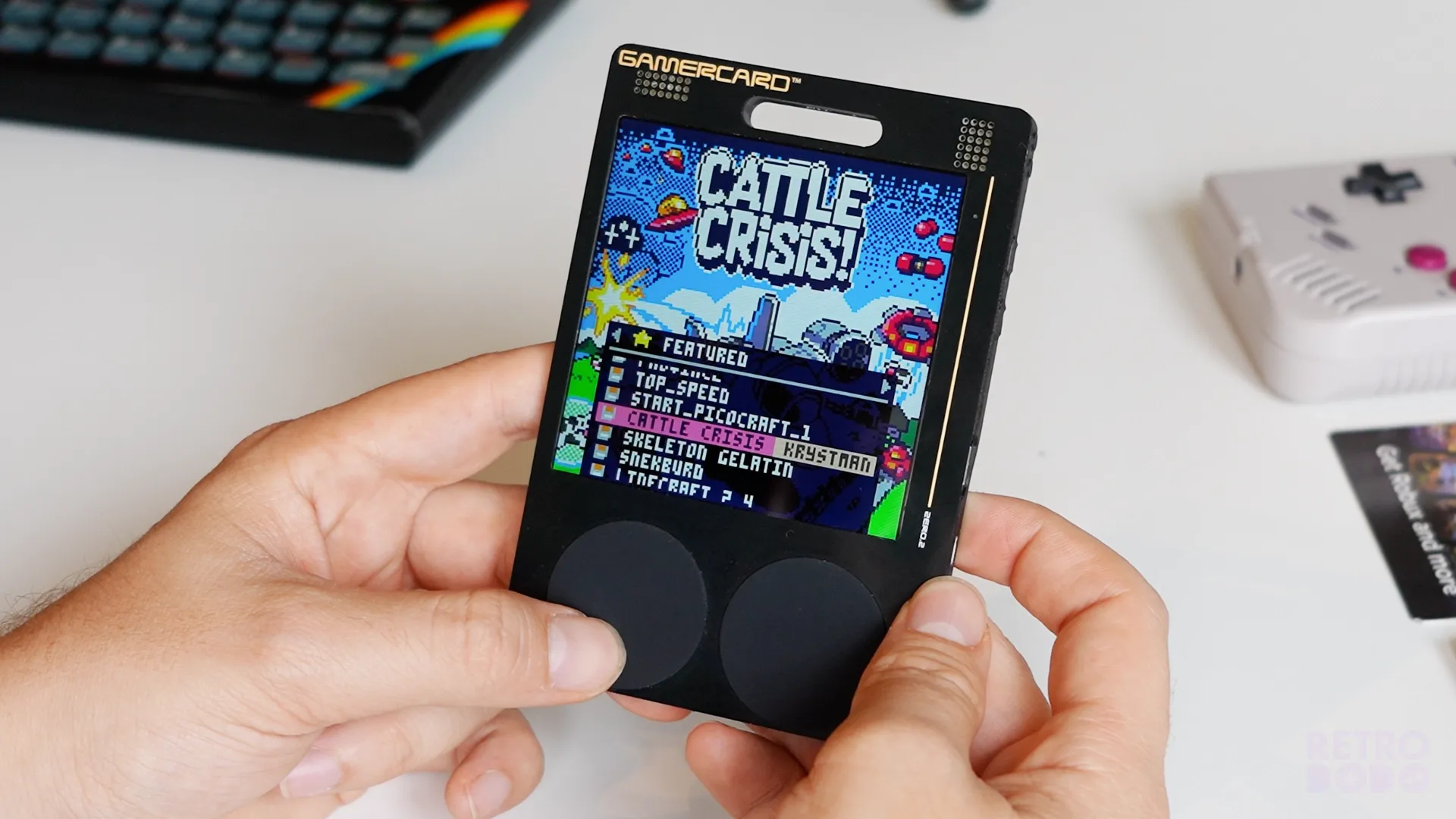
The GAMERCARD feels like the user experience is stuck in 2010, but this may be because I was playing around with the prototypes.
The user interface lacked any direction. When I wanted to get out of a game and jump back into the menu, I found it all to be a little confusing. There were no menu buttons to allow this to be a 2-second integration.
You could jump out of the custom launcher and into the PC side of things, but because it doesn't have a touch screen, you're moving the mouse around with 4 directional buttons.
I say this is clunky because this is literally designed to be a "grab and go" device that is hanging on a display with zero packaging. But after using it, it's a niche gaming device that's targeted to those who know a lot about indie gaming and emulation.
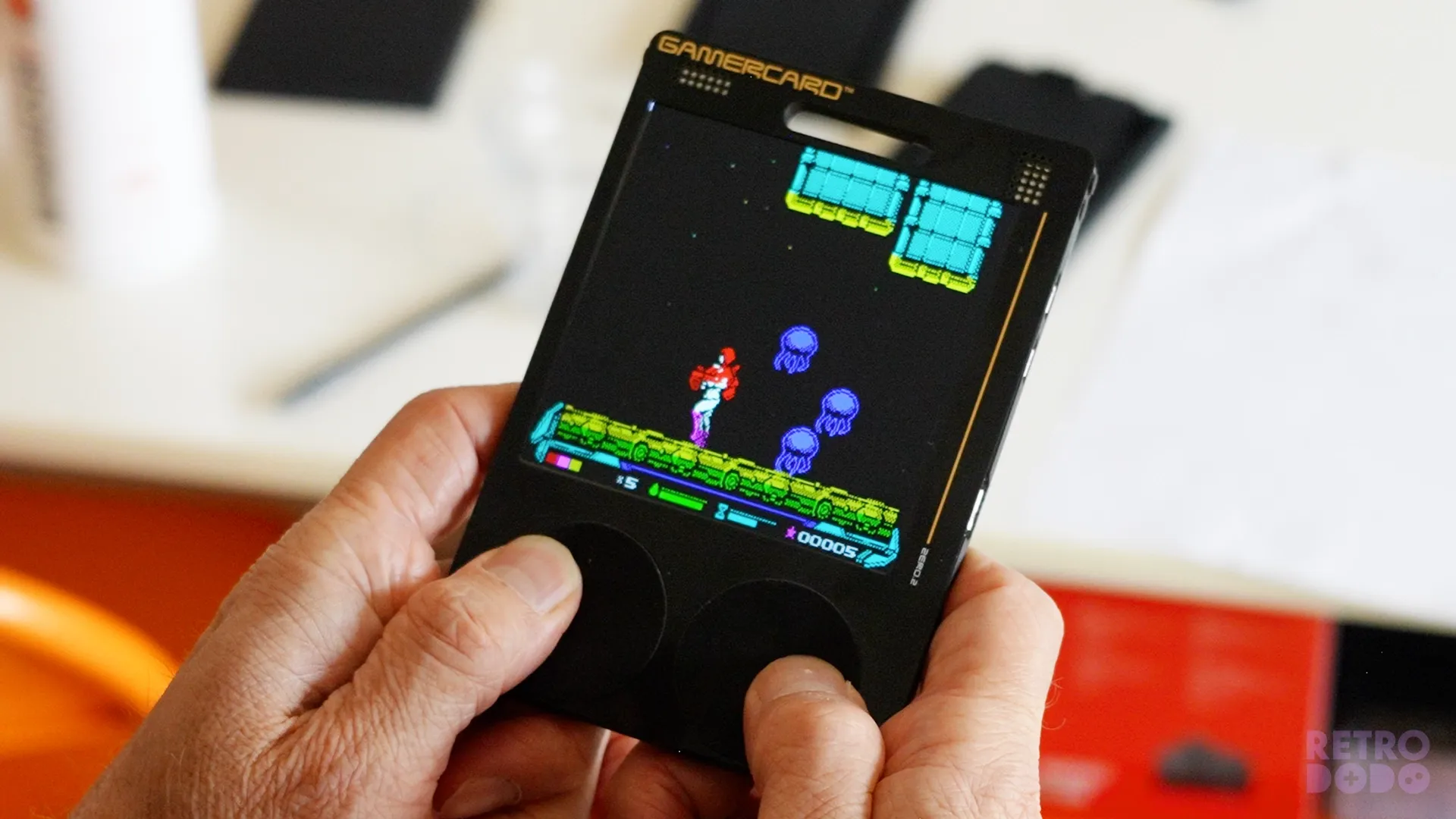
That target audience is not going to pay £129 at an airport to grab this and play games straight away. It requires setting up, downloading emulators, and installing games if you want to go beyond the 5 pre-installed games included. It's far from grab-and-go.
That doesn't take away anything from its beauty, however, or the fact that the passionate gaming audience that love emulating on weird handhelds and want to design their own games, or explore the vast PICO-8 library, will thoroughly enjoy this thing. I just feel like it's software and user experience contradicts the futuristic, simplistic, and minimal design that this has followed physically.
Overall Opinion
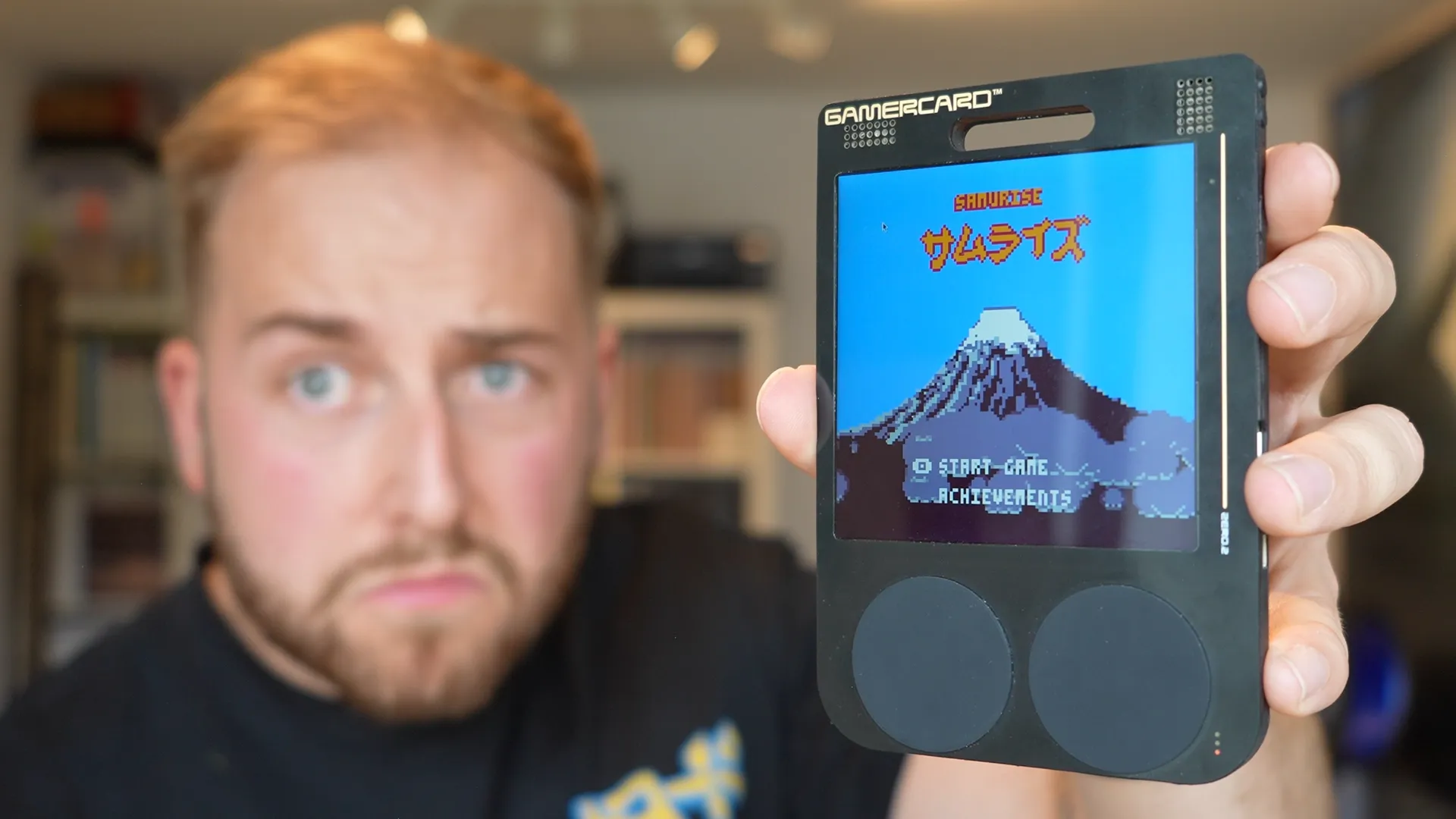
Visually and physically, this is an incredibly unique and slightly absurd gaming device that focuses on a very niche audience of handheld enthusiasts.
Retro fans will enjoy exploring what this device has to offer. The display, matched with the thinness, is unlike anything I have ever experienced, and that in itself is a reason to explore this if you are obsessed with handhelds.
It was an honour to talk with Grant, and to pick his brain while discussing the design inspiration for this device, which goes all the way back to his uncle. It's clear he has so much passion for this little thing, and it shows. It's a piece of gaming art, so thin that it's impressive.
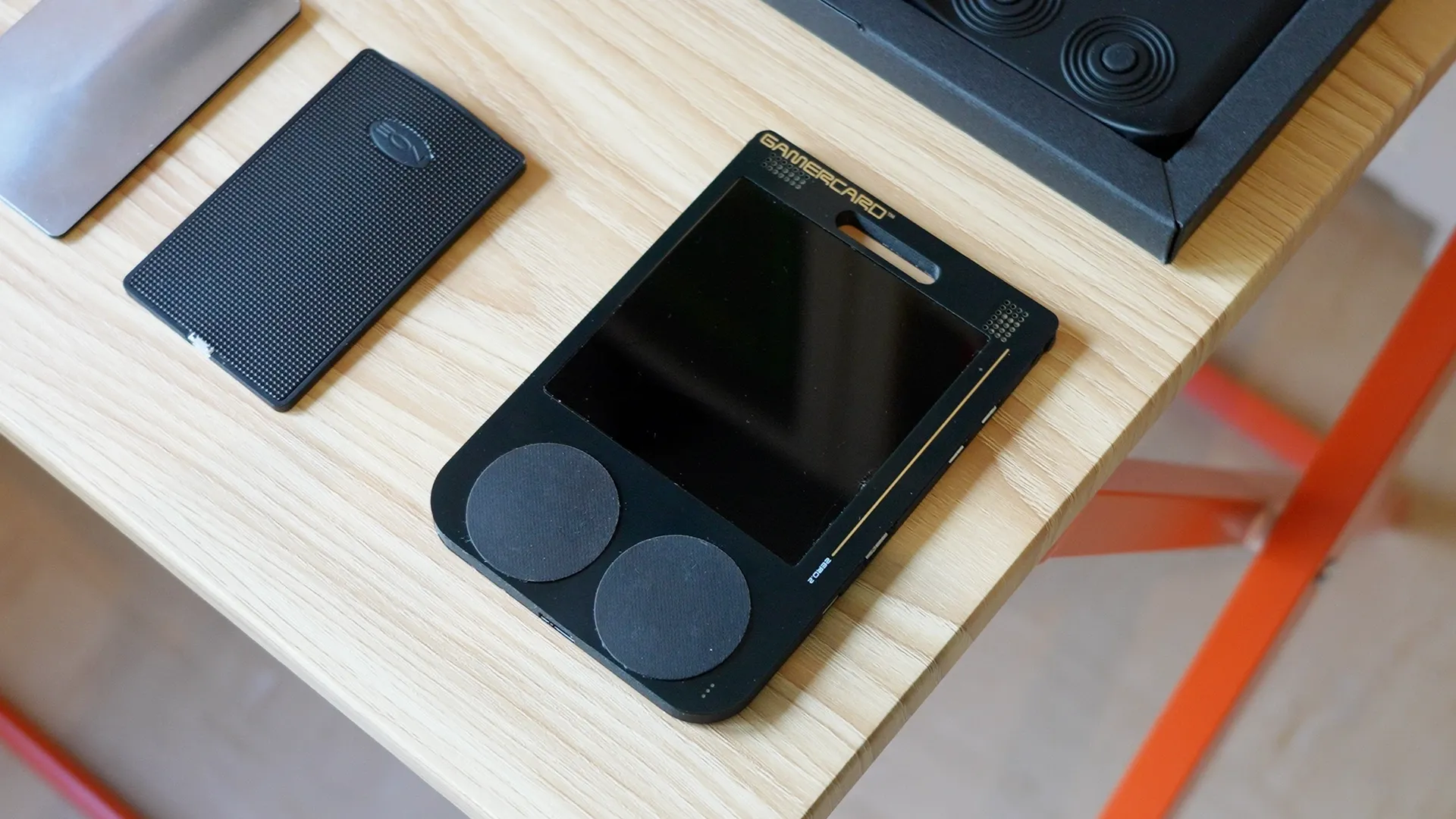
However, that impressiveness quickly slowed down once I turned the device on. Playing PICO-8 games, emulating GAME BOY games, and tinkering with the benefits of Raspberry Pi is something I remember doing almost 10 years ago on $40 devices; it's nothing new in that sense.
Perhaps I am comparing this too aggressively to today's affordable handheld emulators, and smaller independent handhelds like the PlayDate, the Funkey S and the Thumby Color?
This isn't going to sell tens of thousands of units; it's a unique gaming device for handheld enthusiasts wanting to explore something from a creative point of view with heritage in the gaming industry, which can also tickle your PICO-8 and smaller emulating needs.
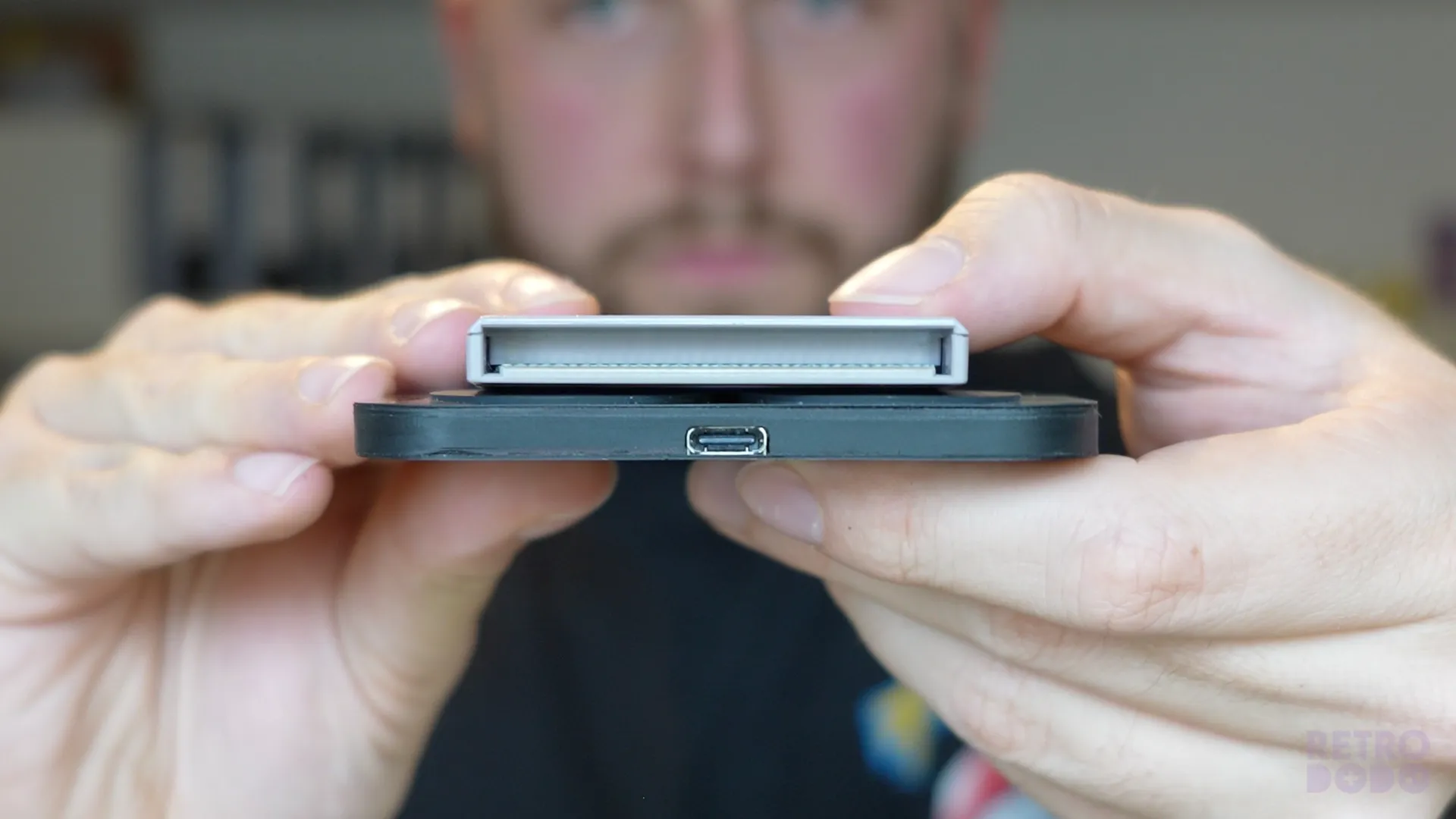
This market is over-saturated, aggressive and requires innovation and speed to compete, especially in this price range.
I respect Grant dearly for inventing this. The market is boring, dull, repetitive, and this has been a beautiful, refreshing take on handheld design, which excites me. But will this refreshing take be consumed by the masses? I honestly don't think so. Will it be loved by a select few passionate gamers? Absolutely.
Thank you to Grant for having me and allowing Retro Dodo to be one of the first publications in the world to cover this device. It's truly appreciated, and I am honoured to have spent the day with you.

